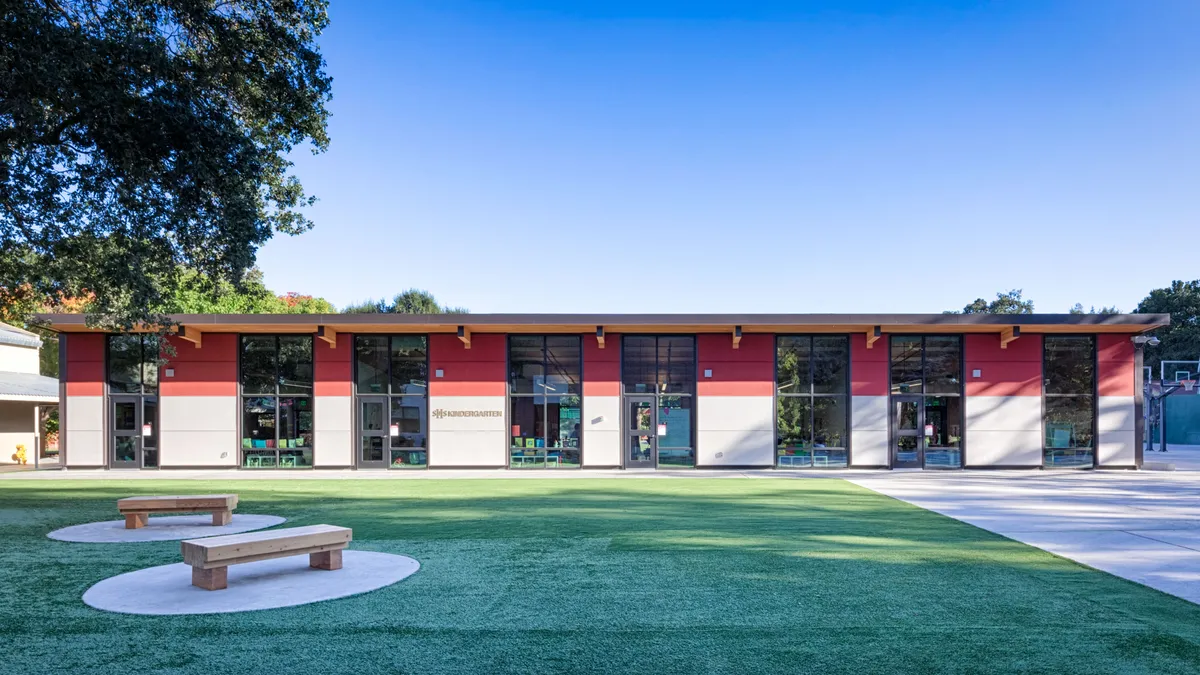Back in the spring of 2021, after the darkness of the pandemic’s first winter had cleared, there was momentary optimism that rising inflation and supply chain hurdles were transitory. Chris Bailey was having none of it.
As senior vice president of integrated solutions at San Francisco Bay Area-based general contractor XL Construction, he was telling his clients that the clouds hanging over construction markets, financing and the supply chain were far from lifted.

“People are starting to become a lot more buoyant and confident,” Bailey told Construction Dive then. “But there needs to be some degree of caution as to how we re-engage with all of this, because we can’t just do what we did in 2019. Product is not coming online as quickly as projects are.”
Nearly 18 months later, after the U.S. experienced inflation levels not seen in 40 years and general contractors engaged in everything from ghost orders to product hoarding to get materials to jobsites, Bailey’s comments seem particularly prescient.
Given his early recognition of challenges to come, Construction Dive had a digital sit-down with Bailey to gauge his take on the current state of construction, inflation, the possibility of recession and construction’s immigration problem.
Editor’s note: This interview has been edited for brevity and clarity.
CONSTRUCTION DIVE: Where are we at the end of summer 2022 in construction with inflation, material costs and increased interest rates? What impacts are you seeing?
CHRIS BAILEY: Inflation seems to be returning to more normal rates, with 2022 trending towards about 7.5% by year’s end, roughly half what we saw in 2021.
But construction costs have generally outpaced inflation by about 1.5%, so the best indication is that cost escalation will be around 9% at the close of 2022.
There are some bright spots. The reduction in oil prices is slowly being reflected in materials like roofing products, but that remains an area of concern.
Similarly, delivery costs are easing, but there is still a shortage of drivers.
How are owners faring? What is the general environment in terms of delaying or canceling projects?
We are seeing some clients take a ‘wait and see’ approach prior to starting projects, but jobs that are already underway are moving ahead.
For example, some of our clients have put all new developments in the Bay area on hold to conserve cash. Other projects are in a go-slow mode.
And when it comes to long term, multi-year projects, owners have really become increasingly concerned with accurately forecasting price escalations, as well as managing their financial risk.
How can construction pros mitigate the impact of inflation now?
Constant communication with owners and pre-ordering of long lead time materials.
You also want to be very aware of market, and be prepared to use alternate materials.
That’s why it’s so important to stay in contact and be transparent with clients so that contingencies and escalating forecasts don’t come as a big surprise.
What are the bright spots? You mentioned initial improvement in supply chain and some better material pricing. Which areas give you hope?
Interior finishes. Steel is trending flat or downward. We are also still seeing good bid coverage in most trades, so those are positives.
Okay, what about challenges? What is keeping you up at night? What’s the biggest challenge you’re dealing with right now?
Our greatest challenges are anything that involves metal, wood or glass in construction.
Also labor shortages – field, manufacturing and trucking. And the possibility of strikes, that’s becoming a bigger issue.
Pricing in the electrical installation market is also still very challenging to accurately predict.
Given the long lead times for things like transformers, which can be more than a year out, as well as items like switchboards and lighting fixtures, electrical providers are still escalating their services at disproportionate rates. And they’re limiting pricing guarantees.
Looking ahead, recession or soft landing?
I’ll go with a bit of both: soft recession.
The job market is still healthy – so we are looking forward to a soft landing there.
And the slowing down of escalation to somewhat normal levels is a positive.
But global influences are still at play.
You’ve still got these wildcards, like the Russian war and the pending impacts of the mid-term elections.
We're already in the middle of a labor crisis in construction. How are contractors going to staff up as government funding from three major investment acts works its way into the economy?
It’s going to require higher wages, better working conditions, a re-invigoration of trade schools and focusing on craft skills as a real career opportunity.
If you could solve one problem for construction that would have the biggest positive impact for contractors, what would it be and why?
Immigration reform, hands down.
Our growth is going to be hampered without new labor sources.
You’ve got to find some way to attract the workforce back into the market to re-establish the status quo, or identify another source of labor to replace workers who abandoned positions during the Great Resignation over the last two years.
They’ve got to come from somewhere.
Any other thoughts?
There has been a lot of interest in these topics in recent media and industry events. But it’s a multi-faceted problem and it’s not easy to tackle on all fronts simultaneously.
We are trying to combat political, global, labor, delivery, schedule and cost impacts. And we’re trying to do it all at the same time.
But as one eases, another gets worse.
Construction is not a linear process, like automotive production, so it’s harder to contain a bunch of different impacts at once. It will continue to take time.
There are some common denominators, but there’s no one magic bullet. Isolated impacts are going to continue to influence the market.






















